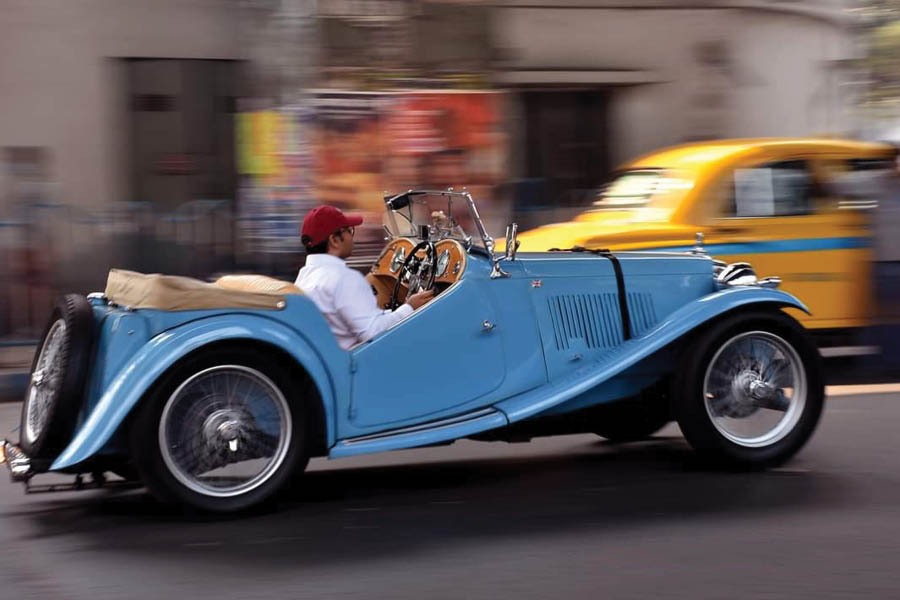One of the most dramatic heritage restoration projects in Calcutta covered no more than 30sq ft.
This is the story of how Rupak Ghosh restored an obsolete MGTC in 18 months, transforming vintage scrap to roadworthy automobile value.
Let him narrate the story.
“The decision to buy the MGTC (Morris Garages pedigree) was based on a 40-second ‘encounter’ with another MGTC that had descended from the AJC Road flyover and was waiting at the traffic signal. I came in and parked behind. I had not seen anything like it (which is surprising, considering that I was already the owner of three vintage cars). The traffic lights changed; our cars diverged but the seed had been planted. The word immediately went out across the pan-India vintage car informers’ network: ‘I need an MGTC.’

“The decision to buy the MGTC (Morris Garages pedigree) was based on a 40-second ‘encounter’ with another MGTC that had descended from the AJC Road flyover,” said Ghosh
“When I researched, I discovered that the MGTC was not just another vintage car. It came with a back story: following World War II, American GIs, leaving Europe, shipped these vehicles home. There was a reason: they liked the speed of these vehicles. They were two-seaters instead of the traditional four-seaters; the automobile metal had been largely replaced with wood to reduce weight; the six-cylinder engine had been replaced with the four-cylinder equivalent; the dual carburettor supplied more fuel to the engine. This complement made the MGTC a platform around which the modern sports car was created.
“In 2017, I got a call that ‘Aapke layak ek MGTC gaadi hain.’ I sent a mechanic to Rajasthan to appraise it. The MGTC had been customised to ferry passengers commercially: the head was gone; the bonnet had been extended to the front grill; the dashboard had been replaced with a tin sheet; the remains of the car sat inside a ‘godaam’; it had not moved for years. In most cases, this would have been sold ‘kilo ka hisaab se’, but here it was being offered to me at four times the going rate. Normally one would have said ‘Phir kabhi’, but emotion prevailed; I just had to have it. The scrap was transported to a larger vehicle and carted to Calcutta.
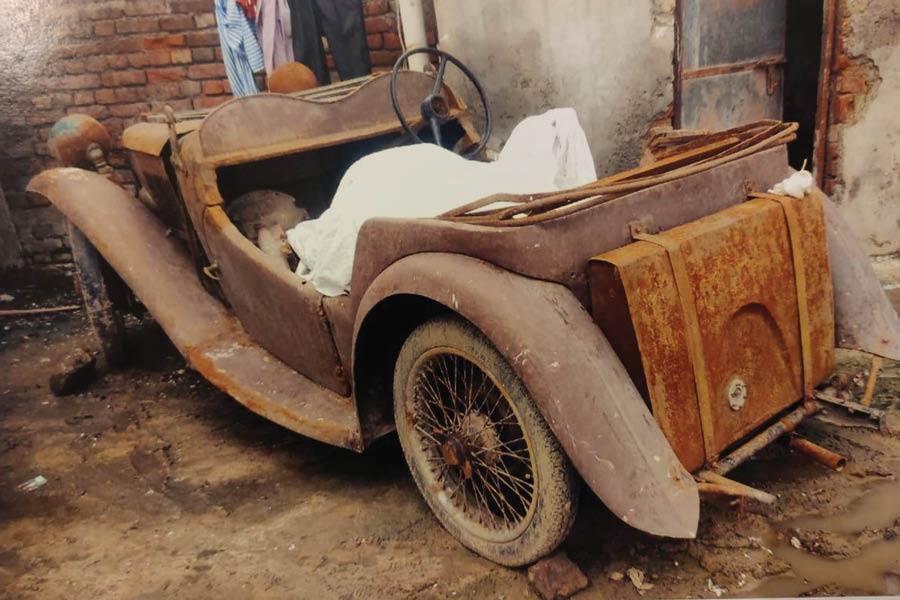
“When I researched, I discovered that the MGTC was not just another vintage car. It came with a back story…”
“The immediate priority was not to pounce on the vehicle and kickstart the restoration. The first step was to understand the nature of what one had acquired on the basis of a long-distance voice and some Whatsapp-ed pictures. One began to access restoration manuals, understand what would go into this MGTC, what needed to be sourced from where, and what proportion of the vehicle would need to be retrofitted. One went through manuals, websites and buyer experiences in detail before one said ‘Now we are ready.’
“What not to do became important. One, most people in my position would have said ‘Give the CMYK requirement to a paint shop, paste the colours on different flat plates, check which shade works best and select from that.’ I was advised to test the colour on a cambered metal sheet instead (‘the colour will slightly alter’). I was advised to examine the colour under natural light and shade (‘decide which shade will suit best’). Two, there was a danger of over-restoring the vehicle and making it better than existing MGTC equivalents. One decided that functionality over perfection would be preferable. One focussed on getting the vehicle to as close to what the original must have looked like, but using retrofitted material that no one would be able to discern, followed by gradual and selective upgradations to original components – the best way to get the vehicle on road within a deadline and yet keeping on improving it.
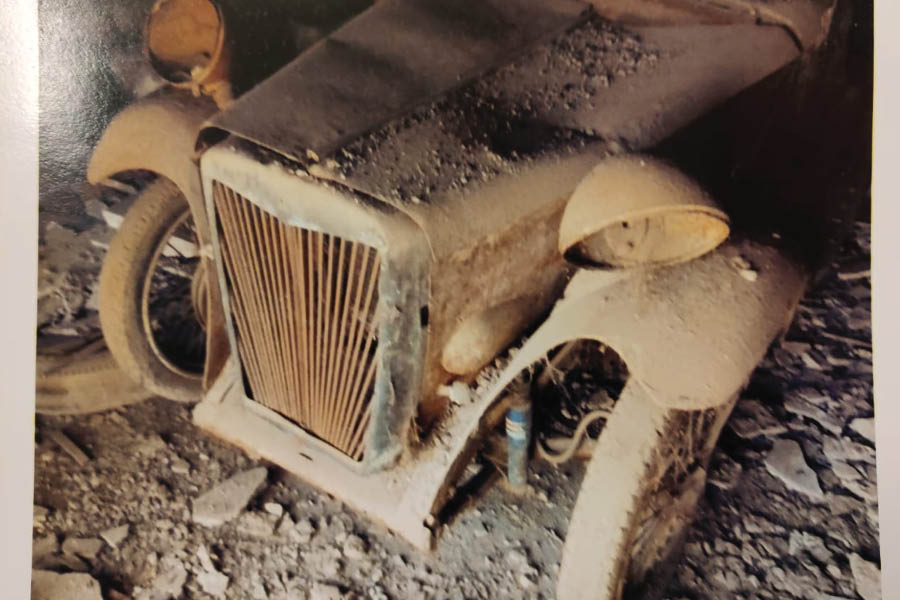
“The immediate priority was not to pounce on the vehicle and kickstart the restoration. The first step was to understand the nature of what one had acquired on the basis of a long-distance voice and some Whatsapp-ed pictures”
“While the homework was in progress, the vehicle (actually more scrap than vehicle) stood in a friend’s house for 18 months. Only after the first component import arrived during the pandemic that one aggregated a small operations team: one head mechanic, one tinsmith and one coach maker (carpenter). The responsibility for turning the engine around was given to Rahul (Bompyda) Sarkar, who generally worked on turnkey restoration projects, but in this case did me a favour by agreeing to address only the engine (‘Achcha, kore debo’). I was lucky; Bompyda was a master at the restoration of British cars.
“There were a number of challenges: the four-seater had to be returned into a two-seater; there was a mismatch between what one saw of the original vehicle on the website and what one had inside one’s garage; no two original components sourced were the same (‘15 per cent variation’); one needed to listen to the internal umpire (‘You must know when to stop building, building and building’); the chassis had to be separated from the body and taken to a marine sandblaster in Behala to eliminate hairline cracks; the original electrical harness needed to be imported.
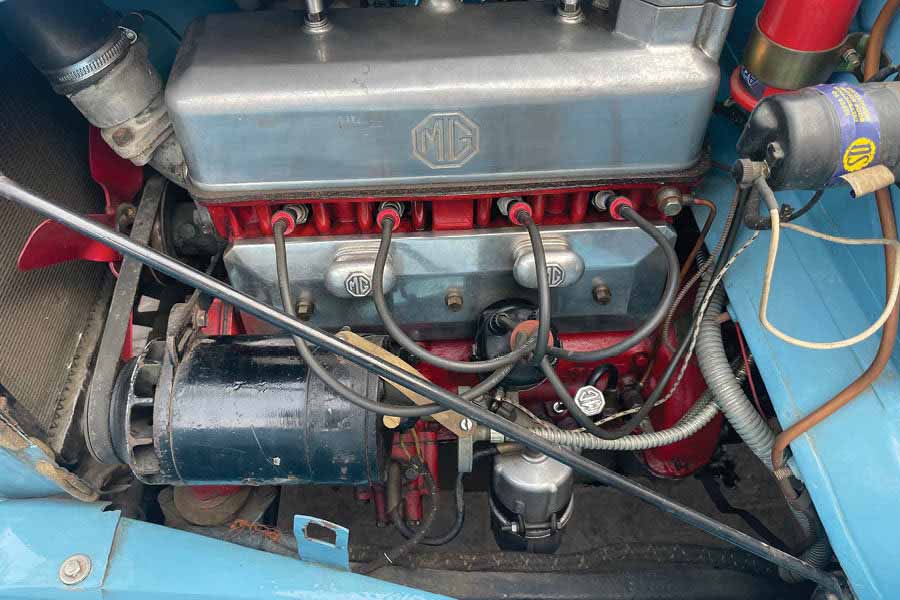
The restored four-cylinder engine
“The turnaround was slow. I would come from the High Court (my workplace), spend an hour with the mechanics, get a lowdown of the day’s progress and chart out the following day’s schedule. This was the only way I could balance both commitments – complete control of one and extensive delegation of the other. A number of people will be surprised: ‘Eighteen months to transform only 30 sq ft?!’
“In December 2021, the vehicle appeared to be road-worthy again. On the first day, the entire family stood on the verandah to check whether it would roll out. Cholbe ki na. It did! The MGTC was driven experimentally around one block that covered Scottish Church at 8pm. The second test involved taking it to Saturday Club through the Red Road route (during which the knock-off spinner flew off the wheel and had to be retrieved). After minor aberrations, there was a growing confidence: the restoration was headed in the right direction. The vehicle was ready – after decades. The first public appearance of the MGTC at the Statesman Vintage Car Rally in January 2022 was a showstopper: our vehicle won two trophies.
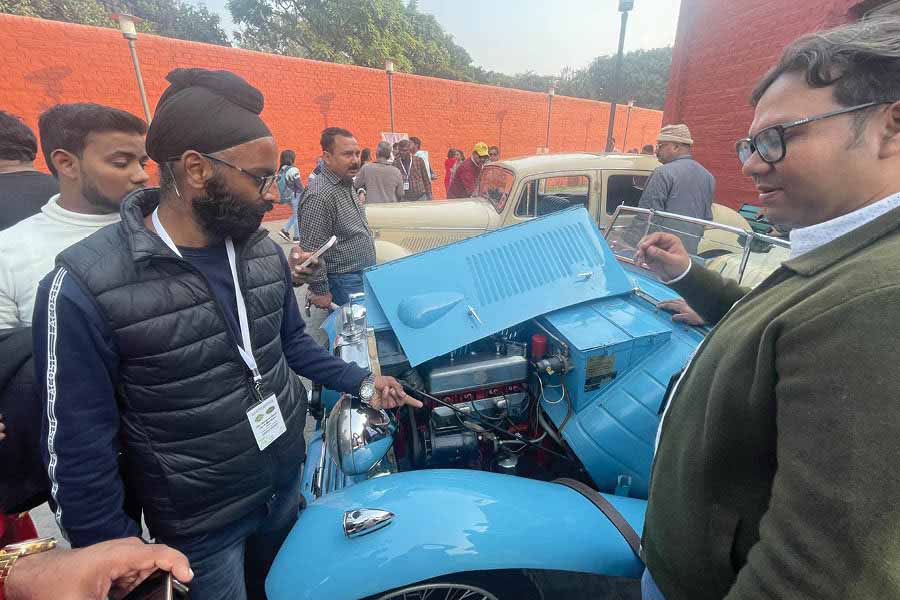
Ghosh (right) with his pride and joy at a vintage car show
“The longest the MGTC has been driven has been from Bethune Row to Avishikta on the EM Bypass (where Bompyda lived). This was relevant: my weakest moment was when Bompyda had called to say that ‘Bujhte parchhi na, the engine is showing five bars of oil instead of the usual 40; there is no fuel pressure. I will have to open the engine and start all over again.’ My sleep was disturbed for seven nights, until Bompyda realised that he had not put the main centre seal. The second reason was realised only in retrospect; Bompyda is no longer with us today.
“The restoration of this once-hopeless case – a friend’s father called to ask ‘Ei junk gadi jibone cholbe?’ – is really a metaphor of how one needs to address life. However impossible things appear at a given point, the outcome is largely decided by the extent of one’s commitment. The harder one tries, the luckier one gets. My luckiest break was related to the windshield. The cost floating around the internet was 5,000 pounds sterling for an original that I did not wish to spend. I would coax my contact in England twice a week to check if he could find me one; he would tell me that it was impossible to prise one out of a running car and send it to India; besides, it was unlikely that one would have one lying around. After weeks, he called to say that the owner of an MGTC had passed away and his widow was clearing his belongings, and would I be interested in the windshield for the equivalent of $100?
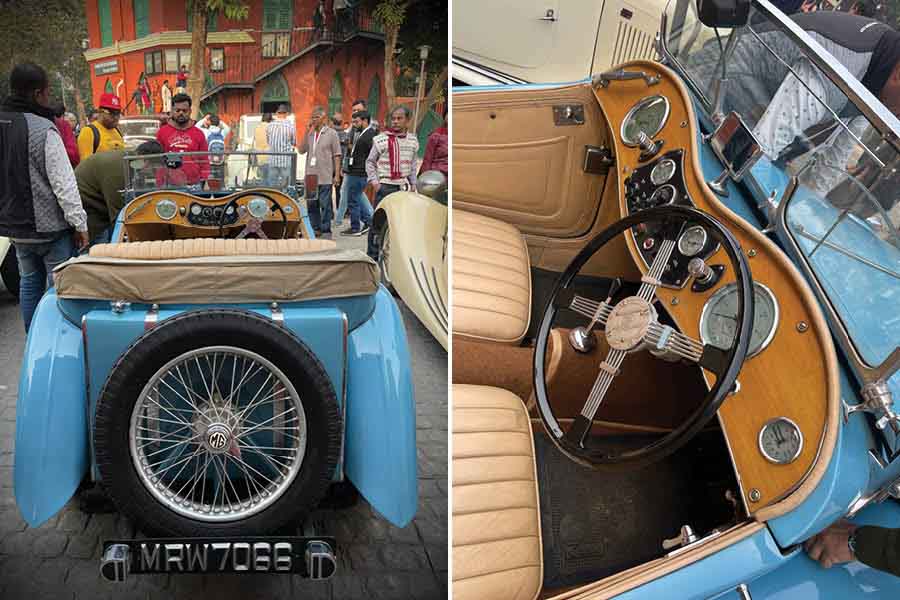
The rear and interior of the car
“The successful restoration of the vintage car is really a tribute to the light fabrication competencies in Calcutta – the capacity to understand the magnitude of the technical challenge, customise components to perfection and do it at a cost considerably lower than other large cities. The result is an MGTC that ‘can put a smile on the face of an octogenarian and an eight-year-old.’ The vehicle is now a show-stealer at traffic signals; commuters in buses or cars and street pedestrians turn around to look and wave at the driver.
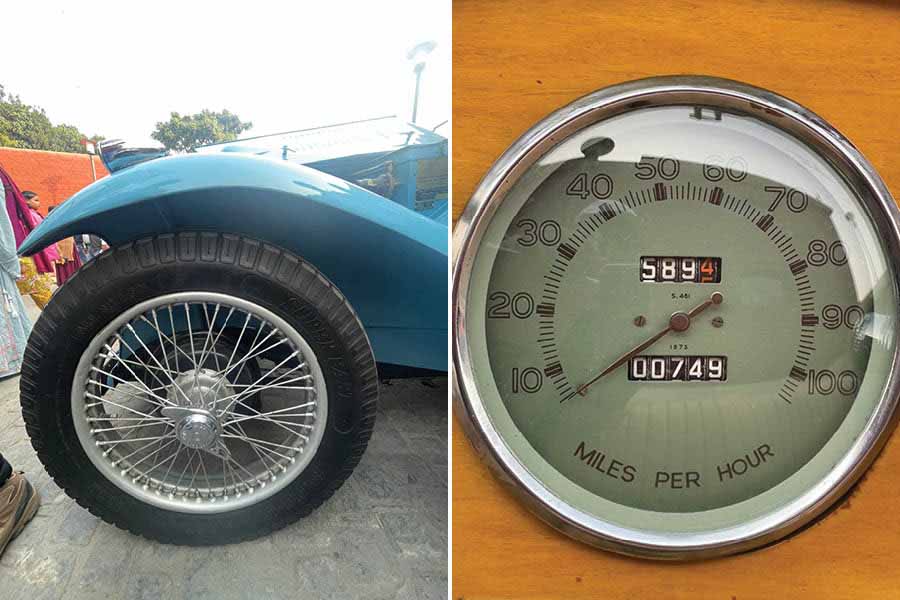
The vehicle is now a show-stealer at traffic signals
“Following this extensive effort – the vehicle consumed more than 200 components and hundreds of person hours – it would have been defeating for the MGTC to stay garaged 50 weeks a year, awaiting a couple of winter vintage car rallies and club shows. I drive the car five times a month. Our vintage car group usually converges each Sunday; each member brings his or her vehicle; this makes it possible for our cars to remain in active use; we tweak improvements on the go as opposed to keep the car immobilised and expect it to immediately run when switched on months later. By keeping our vintage cars in circulation, we have created a vibrant vintage car owners’ community, share knowledge and experience across owners, help generate employment through the year and help make Calcutta a livelier place.”
